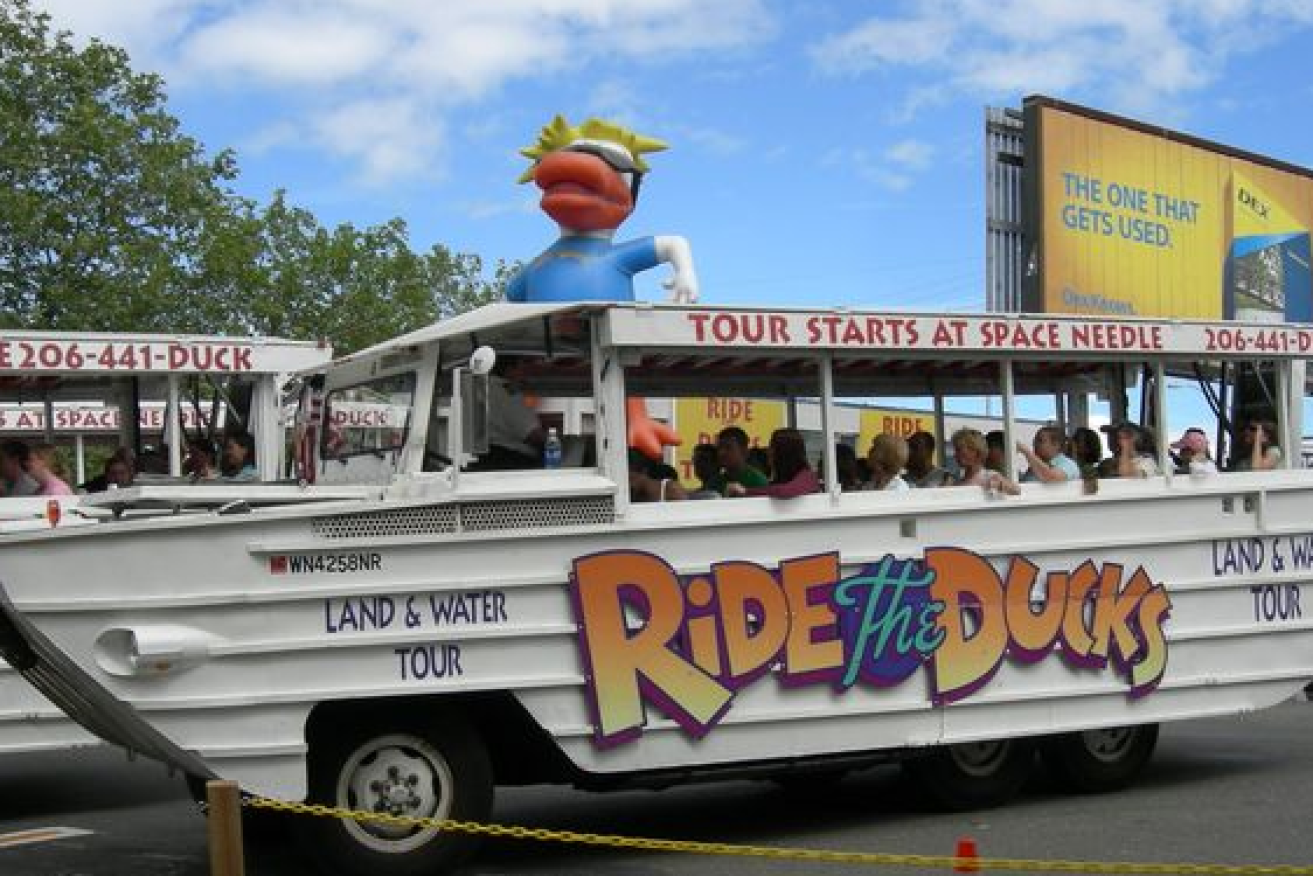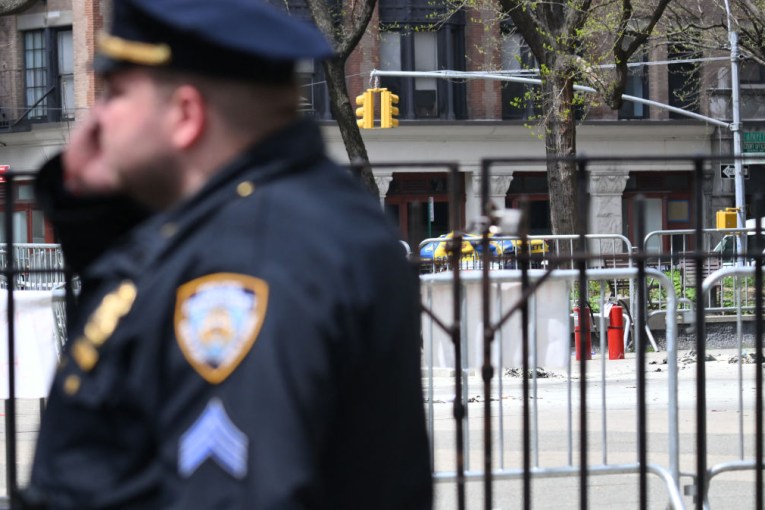‘Lord, just let me die’: Duck boat survivor relives the horror of tourist boat’s sinking


A Ride the Ducks boat identical to the vessel that sank enters the water on an earlier and happier voyage. Photo: Bill Penn
One of the few survivors of the US tourist boat accident that left 17 people dead has spoken of the moment she begged God for death while struggling for air alongside her drowning husband and three young children.
“I couldn’t see anybody, I couldn’t hear anything, I could hear screams, I felt like I was out there on my own,” critically injured survivor Tia Coleman said from her hospital bed.
“I was yelling and I was screaming and finally I said, ‘Lord, just let me die. I can’t keep drowning’.”
Ms Coleman was one of 11 family members, including an infant and children, who were on the duck boat on Table Rock Lake outside the tourist city of Branson, Missouri, on Friday (AEST).
She lost her husband and three children, aged one, seven and nine. Along with her 13-year-old nephew, she was one of only two members of her extended family to survive.
The World War-II style amphibious boat with 31 passengers was battered by white-cap waves and furious 105km/h winds when a microburst storm hit the tourist city of Branson on Friday (AEST).
Divers have recovered the bodies of 17 people, ranging in age from one to 70, from the wreckage of the sunken boat, which rests 24 metres beneath the surface.
A video of the incident captures the doomed vessel being tossed like toy amid crashing waves and howling wind.
The Missouri tour company, Ride the Ducks Branson, had life jackets on board, but it is thought few if any passengers were wearing them.
Ms Coleman, who was pulled from the water by a rescue boat, said there were life jackets on board but crew members said, “don’t worry you won’t need it”.
“I thought at some point he would say grab the jackets now, but we were told to stay seated and everybody stayed seated. Nobody grabbed it,” she said.
“When the boat is found all of those life jackets are going to be on there because nobody put one on.”
Duck boat criticised by Australian tour operators
The tourist “duck boat” has been criticised by Australian tour operators who say the vessel should have never been used in deep water or wave-like conditions.
Boat tour guide, Neil Mergard who operates in the towns of 1770 and Agnes Water in the southern Great Barrier Reef region of Queensland, told The New Daily his pink LARC boat was not like the DUKW boat, colloquially known as a “duck”, that sank in Missouri.
Although his boat is similarly amphibious, he said the difference between his self-riding, aluminium-hulled and seaworthy LARC and the DUKW was like comparing a “Mini Moke with a Ferrari”.
The tour operator said most amphibious boats operated in Queensland were LARCs, while the 1940s-style army DUKWs, with steel-riveted hulls could float and move in still water, but not much more than that.

With a seaworthy bow, higher freeboard and boat-like lines, LARC-style amphibians like this Scandinavian vessel are far safer than the low-in-the-water, slab-sided “ducks”.
“It’s built from steel … a motorised truck that was used to get across creeks and rivers. A DUWK is very unseaworthy,” Mr Mergard said.
Shaun Grant, the assistant manager of Rainforest Station Nature Park, in Kuranda, in far north Queensland, that operates original World War II Army DUKWs, told The New Daily their boats operated on a private lake and were never susceptible to fast-flowing water or wave-like conditions, as seen in the Missouri incident.
In the 40 years of operation, Mr Grant said they had never had an incident on the water.
“At the end of the day this is a six-tonne vehicle with a small propeller and rudder, it wouldn’t handle well in swift water and wave conditions, which is why we operate in flat water only,” he said.
In the United States, the National Transportation Safety Board (NTSB) and the Coast Guard have begun investigations into the Missouri accident, raising new concerns about the safety of duck boats and whether tourists should be passengers on them.
Thirteen people were killed when a duck boat sank in Hot Springs, Arkansas, in May 1999. The victims of that vessel, the Miss Majestic, drowned after becoming trapped beneath the boat’s heavy canopy.
At the time of the incident the NTSB made sweeping changes to how, where and when such boats should operate. Among the findings was a warning that a duck taking water would sink more quickly than a conventional vessel.
The Missouri boat company’s website has become a tribute page following the incident, with all tours closed during the investigation.
“We are deeply saddened by the tragic accident that occurred at Ride The Ducks Branson. This incident has deeply affected all of us. Words cannot convey how profoundly our hearts are breaking,” the company statement reads.
“We will continue to do all we can to assist the families who were involved.”

People pray outside the Ride the Ducks ticket booth in Branson Missouri. Photo: AAP
Australian maritime safety expert James Gardiner, who investigates maritime safety incidents globally, told The New Daily that wearing a life jacket on a commercial vessel was often not a requirement, but passengers would receive a safety briefing similar to boarding a commercial flight.
“It wouldn’t be very comfortable to be on a plane with a life jacket on, but there are safety briefings given by cabin or crew. The same thing applies in the maritime industry.”








